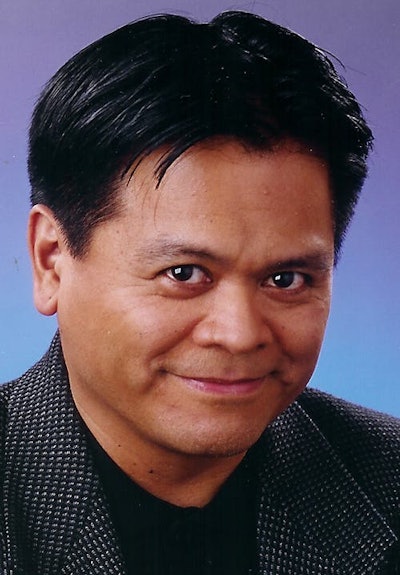Recently, when I was asked to appear on a Diverse sponsored panel at the recent AAC&U annual meeting on the best practices of attracting, hiring and retaining diverse faculty and administrators, I approached it from a journalist’s perspective.
I simply asked the most senior people I knew among my acquaintances around the country about the subject. I talked to people who have served on hiring committees at the department and university level. I talked to some who have been around long enough to see how diversity policies have both expanded and contracted over decades. And then I gave my sources full anonymity so as to be free to express exactly what the problems are and how to mitigate them so as to qualify as a “best practice.”
 Emil Guillermo
Emil Guillermo
What I thought would be fairly simple isn’t.
And that’s because as my sources put it, every school is geo-culturally limited, locked into different standards for what “diversity” means. And that is just one item in a proverbial list of “dirty little secrets.”
When it comes to diversity in institutions, as the saying goes, your mileage will vary. How else could you have a situation at Purdue Northwest, where Chancellor Thomas Keon could use a mocking Asian accent and get away with it at a graduation?
He’s the leader of diversity there? That’s going to make an Asian American want to work there?
Keon’s been reprimanded by the trustees, though the Faculty Senate gave him a vote of no confidence and demanded a resignation.
Keon stays on.
Since Jan. 1, we’ve been waiting for the newly appointed president of the entire university system, Dr. Mung Chiang, an Asian American immigrant to weigh in and possibly override the trustees. He hasn’t, and likely won’t.
And there’s your geo-cultural limitations. Best practices depends on whether it’s a private or public institution, religious or non-sectarian, in a red state, a blue state or a purple state.
It makes a difference.
When it comes to diversity, your mileage will vary.
Still, it seems we all want to portray an ideal sense of diversity, and yet, we find it’s often near impossible to get. We try to make a “diversity hire” and then we end up with the gap.
The gap is the difference between what we stated were our goals and what we wind up with, if we wind up with anything at all. It is the dissonance of diversity.
We know what we want to hear but we seldom hear what we get. Or what we need. And what we hear sounds like public relations b.s.
But since few institutions want to be seen as anti-diversity, they all want to do the right thing. In the end, however, as my sources say, schools are stuck where they are and what they are—traditional, slow moving institutions whose ideals sometimes exceed their grasp.
So the best practice boils down to one word: Honesty.
Have a diversity policy that is honest to the realities of the institution. If you are in a red state with right wing colleagues, you’re not going to get the diversity of California state college.
Next, in writing an accurate job description, what kind of employee qualities are you looking for— a firebrand or a milquetoast? Broadening the definition gets you more candidates, and more diversity. Narrowing it will get you less. But there’s no guarantee they’ll get funneled into the actual interview process. Not if the goal is getting the right fit for the university, and not for diversity.
“I think a lot of universities are pretending to want to be diverse, but that the hidden agenda is they want someone who will be a good fit for the continuing political culture of that institution,” one of my sources said.
A broadly worded description will get applicants but, in the end, my source says the “inborn biases, the inherent political, cultural biases of the institutions become the criteria.”
Essentially, you’re collecting resumes until it all gets winnowed down to the 2-3 candidates on the short list. And even that may have already been determined. And then once the hiring committees recommend to the administration—the process stops being fully transparent and becomes a “personnel” matter. And then we’re back to yet another “dirty secret.”
This is a semi-secret non-transparent process, that you must fight to keep fair, and unbiased.
My sources said, everyone on a hiring committee must realize the real consequences of a failure to disclose conflicts of interests. Behaviors change if they know false steps could automatically nullify the entire process.
We turn again to Purdue for an example. Here was the process to find a new president to replace Mitch Daniels, the former GOP presidential hopeful and governor of Indiana, who was president of Purdue for ten years.
Daniels basically handpicked Chiang. According to The Chronicle of Higher Education, trustees appointed Chiang president “without any search or even interviewing him formally for the position.”
Doesn’t sound like a best practice to me.
But then maybe that explains the recent lack of action against Keon at Purdue NW for using a racial dialect mockingly at a graduation. He’s not a joker, he’s chancellor. But this is the state of diversity around the nation in higher ed. Even in 2023, it’s still a matter of your mileage will vary.
The best practice takeaway then remains to be honest about the current reality about where you are. And not to give up. The struggle for diversity has started, but as we learn, it never ends.
Emil Guillermo is a journalist and commentator. He does a one-man theater show on being Asian American in the U.S. See more at www.amok.com
















